Oath of the Gatewatch Mechanics
The battle for Zendikar... well, could have gone better, in all honesty. What was one massive Eldrazi titan destroying everything is now two. Hi, Kozilek. Long time, no see. Ob Nixilis has his spark back and isn't happy. It's time to regroup and take a stand. Oath of the Gatewatch introduces new cards, new abilities, and new strategies to improve your current decks or make new ones. Let's take a look.
The Colorless Mana Symbol
Battle for Zendikar had a strong colorless theme, thanks in part to the devoid ability. Being colorless mattered in a variety of ways. In Oath of the Gatewatch, the Eldrazi take it one step further. Introducing the colorless mana symbol.

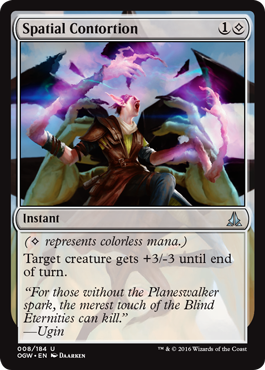
To cast Spatial Contortion, you pay two mana: one generic (that's the {1}) and one colorless (that's the {C}). The generic mana cost can be paid with any type of mana—that means any color or colorless. But the {C} is different. That can be paid only with colorless mana. There have been plenty of nonbasic lands over the years that produced colorless mana. This set gives you a more... ubiquitous way of doing it.
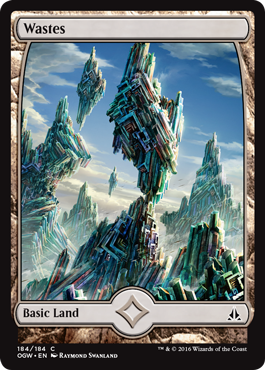
Wastes is a new basic land that taps to add {C} to your mana pool. Notably, it doesn't have any land types. So if an effect instructs you to choose a basic land type, you can't choose Wastes. Cards like Dream Thrush and Coalition Victory don't change at all. Wastes is basic, so you can have as many of them as you want in your Constructed deck, including your colorless Commander decks. Hooray!
In Limited events, you can play Wastes only if it's in your card pool. For Sealed Deck, that means you have to open a Wastes in order to play with it. In Booster Draft, you have to draft Wastes. Figuring out exactly how to pay those {C} costs will be a priority in this set. (But don't worry—Wastes isn't the only way.) You can't just add as many Wastes as you want while building your deck like you can with the other basic lands.
The symbol {C} will be used going forward to represent one colorless mana. The numerical and variable mana symbols ({1}, {2}, and so on, including {X}) will still be used, but only to represent costs that can be paid with any type of mana. Before, the symbol {1} was overloaded, and this was confusing to some players. Check this out:
The {1} in the first ability and the {1} in the last ability actually mean different things. On the same card! I know! So the new system will approach the mana symbols in a slightly more logical way. Where you used to see "Add {1} to your mana pool," you'll now see "Add {C} to your mana pool." To illustrate this, I give you an Oath of the Gatewatch reprint, Unknown Shores.
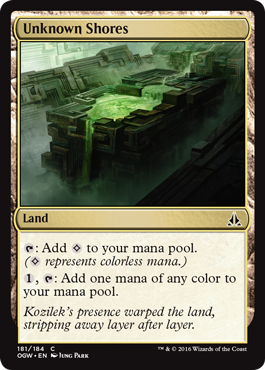
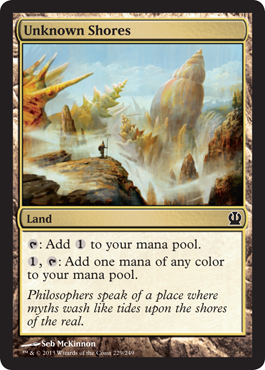
You'll see this change with the Eldrazi Scions in this set. We'll also be changing the Oracle text of previous cards so they say things like "Add {C} to your mana pool" as well. I'm kind of out of interesting information, but I do have another preview card for you. So here's that!
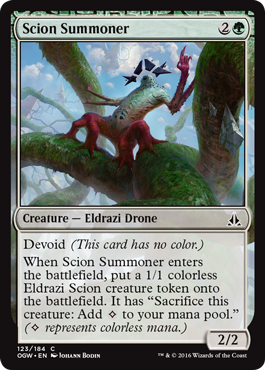
Cohort
The Allies are still a force to be reckoned with, fighting valiantly for the safety of their world. Cohort abilities require two Allies to work together.
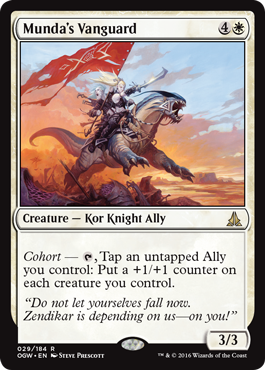
The cost of each cohort ability is the same. The effects differ wildly, so make sure you read each one carefully. Because the cost includes {T}, the Ally that has the cohort ability has to have been under your control since your most recent turn began. Colloquially, it can't have "summoning sickness." But the other Ally, the "an untapped Ally you control," could be one you just cast. So if I start my turn controlling Munda's Vanguard, I could cast another Ally, and then tap them both to activate the cohort ability of Munda's Vanguard.
Support
No one fights the Eldrazi alone. We all need a little support now and then. Support is a new keyword action that boosts your (or your teammates') creatures.
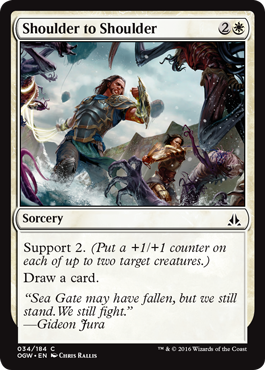
"Support N" means "Put a +1/+1 counter on each of up to N target creatures." In many cases, you'll choose two creatures as you cast Shoulder to Shoulder. But it's okay to choose fewer targets. If you control only one creature, it's fine to cast Shoulder to Shoulder targeting it to give it a +1/+1 counter. In fact, you can cast Shoulder to Shoulder with no targets just to draw a card. It may not be the best use of it, but in the fight against the Eldrazi, sometimes you do what you have to do.
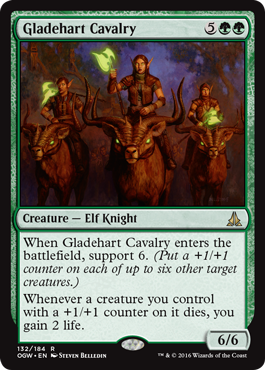
If a creature (or any other permanent) has an ability that supports, there's a slight twist: the ability can't target the creature itself. You may notice that the reminder text on Gladehart Cavalry says "other target creatures." So if there are no other creatures at the moment Gladehart Cavalry enters the battlefield, the support ability just won't do anything. Remember that it's one +1/+1 counter per target. You can't pile up all six counters on the same creature.
Surge
To win this battle, it's important that we capitalize on momentum. Surge is a new ability that lets you cast spells for an alternative cost if you—or a teammate—have already cast a spell during the turn.
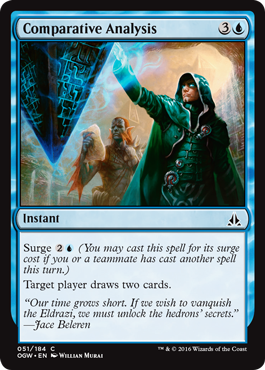
You qualify for the surge cost no matter what happened to that other spell. It could have resolved. It could have been countered. Maybe it's still on the stack! For example, you can cast one spell and then cast Comparative Analysis in response and you'll pay {2}{U} for it.
On some cards, surge is just a nice mana discount. But on others, surge brings you not only mana savings but additional effects!
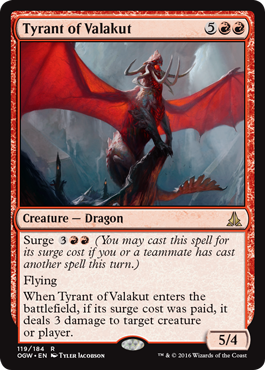
That 3 damage might be a great reason to chain spells together if you can. Remember that you can pay the surge cost only if you're casting it as a spell. If you find a way to put Tyrant of Valakut onto the battlefield without casting it, there's no way to pay its surge cost.
One question you might have is "What is a teammate?" That's kind of a sad question, but okay. The most popular team format is probably Two-Headed Giant. You may also be on a team facing a dastardly Archenemy. Unfortunately, you don't have teammates in multiplayer formats like Commander, even if you decide to "team up" with another player until your sudden but inevitable betrayal. (Oh, come on. We all saw it coming.)

